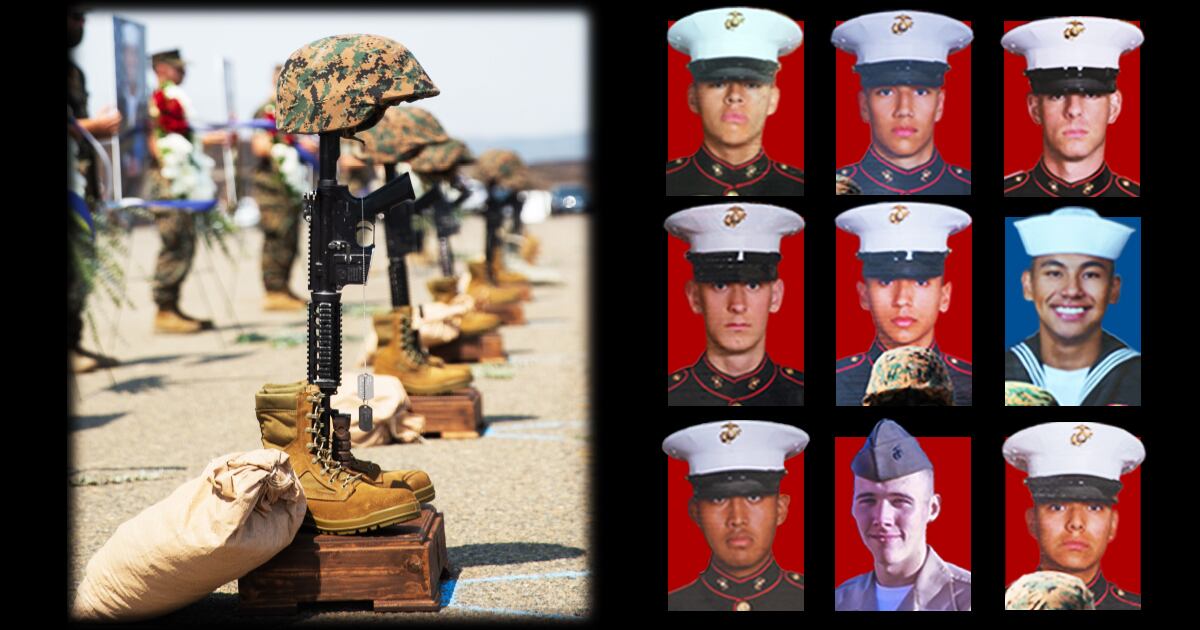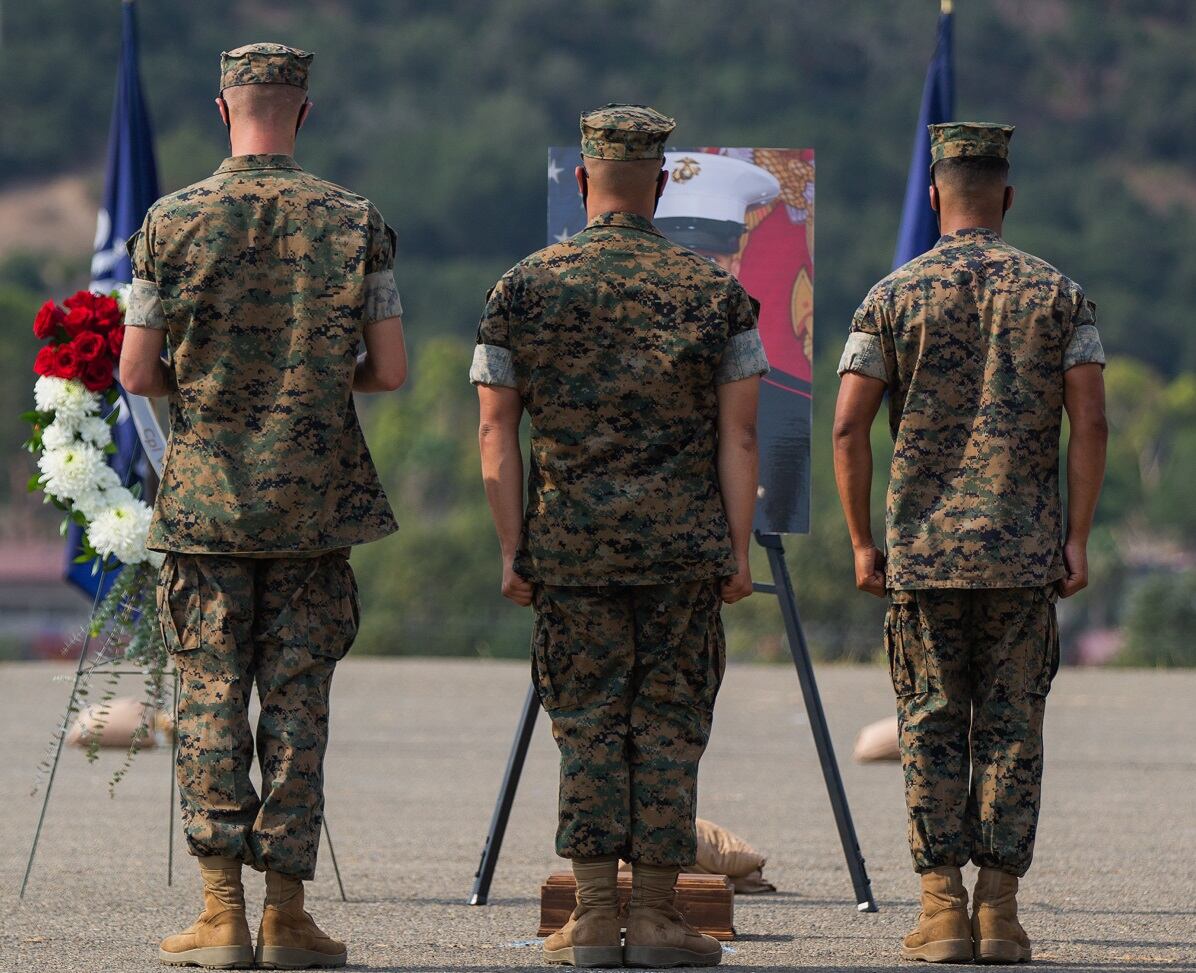On Monday the House of Representatives will ask senior generals of the Marine Corps why nine young men died horrific drowning deaths, trapped in a 36-year-old amphibious assault vehicle that never should have passed inspection.
Why are our generals and admirals so rarely held responsible, or made accountable, for noncombat preventable training deaths? Why, instead, do they all too often penalize lower ranks, in a shameful pass-the-blame game?
A recent Marine Corps investigation found that this ocean tragedy was “preventable,” with shoddy maintenance, a lack of safety boats, insufficient training and complacency all playing roles in this shocking loss of young life.
The families of those young men ― some of them in their teens ― are demanding answers.
Specifically, Maj. Gen. Robert “Cas” Castellvi, the commanding general of the unit, was found to bear “some responsibility for training failures which led to the disaster,” said the three star-general who endorsed the inquiry report. Then, why, after these avoidable deaths, was Castellvi appointed to the key position of inspector general, who investigates serious problems in the Corps?
A colonel and lieutenant colonel in the specific unit have been fired — the former, in suspicious timing, on the very eve of a House hearing in April — and others further down the chain of command may too be penalized. But apparently no brigadier general, major general, lieutenant general or four-star general is expected to be disciplined.
RELATED

These “flag” officers, as they are called, have high salaries, fine accommodations, chauffeured vehicles, are surrounded by personal staff and retire with good pensions.
When they retire, they often earn far more in the defense industries, which place them in positions selling multimillion/billion dollar products to the Department of Defense or offer them lucrative board memberships.
The job descriptions of these “flags” almost always emphasize these particular words: “readiness/ready, prepared/preparedness, safety.”
To be clear, the problem of accountability is not confined to the Marine Corps.
Former Chief of Naval Operations Adm. John Richardson presided over the Navy during the recent ship collisions and numerous other fiascos, yet he avoided being removed. Adm. Philip Davidson, head of U.S. Fleet Forces Command at the time, reportedly told concerned commanding officers later that if they couldn’t take their ships to sea with the resources at hand, “Then we’ll find someone who will.” Davidson was promoted to head of U.S. Indo-Pacific Command, and in 2019 he told Congress, “The fact of the matter is 280 other ships weren’t having collisions.”
When it came to “readiness” on July 30, 2020, the AAV which plunged hundreds of feet to the bottom of the Pacific was starkly unready. It was a reckless act.
Full disclosure: My son, Marine 1st Lt. Hugh Conor McDowell, 24, was needlessly killed at Camp Pendleton, California, in an earlier, preventable training disaster, when his light armored vehicle rolled over. He was killed instantly, as the vehicle toppled into a hidden crevasse that range inspection had overlooked.
My wife, Susan Flanigan, and my son’s fiancée, Kathleen Bourque, and I all met Castellvi at Conor’s memorial at the base. We were uncomfortable with the way in which Castellvi handled the Line of Duty report, despite it exonerating Conor from any blame.
We are indeed proud that Conor’s men, who loved him, told us in person, and in signed official documents, that “he saved our lives.” Heartbreakingly for us, Conor couldn’t save himself. Conor loved the idea of his Marine Corps, but in a few short months, he became disappointed with his chain of command, cynical, and frustrated at the lack of readiness of the LAVs he was to lead, which were often in wretched condition and dangerous. Conor was a positive, happy, smart warrior but the reality of Pendleton changed his sunny initial perspective.
Castellvi was the general responsible for both my son’s unit ― 1st Light Armored Reconnaissance Battalion ― and the AAV unit. So his job description included oversight of both. Was a range reconnaissance officer penalized for my son’s death? No. No-one was.
Just in April a key new regulation was announced for all AAV operations: Any unit operating AAVs must have performed and been certified in 18 tasks by the first general officer in their chain of command.
In addition, a Marine Corps spokesman said there were 18 tasks which had to be completed before operations: “The 18 tasks cover a variety of requirements from ensuring training and qualifications for crew and embarked personnel, personnel are properly equipped, vehicles have passed required inspections, and operations are conducted with safety boats, sea-state assessments and positive communication.”
Too late for those nine young men.
Rep. John Garamendi, D-California, the key House Armed Services sub committee chairman on readiness, has said that culpable generals and admirals “need to be fired.” Fellow sub committee chair, Rep. Jacki Speier, D-California, is equally incensed.
The system of accountability and responsibility of our senior military “leadership” is badly broken and it is high time for the U.S. Congress to fix it by holding top commanders responsible and accountable.
Michael H. C. McDowell is a fellow in the International Security Program of New America.
The opinions expressed in this commentary do not necessarily reflect the views of Marine Corps Times or its staff. If you would like to respond, or have a commentary on another Marine Corps topic, please contact Editor Andrea Scott at ascott@militarytimes.com.
This story has been updated to reflect that the AAV sank in 2020, not 2019.




